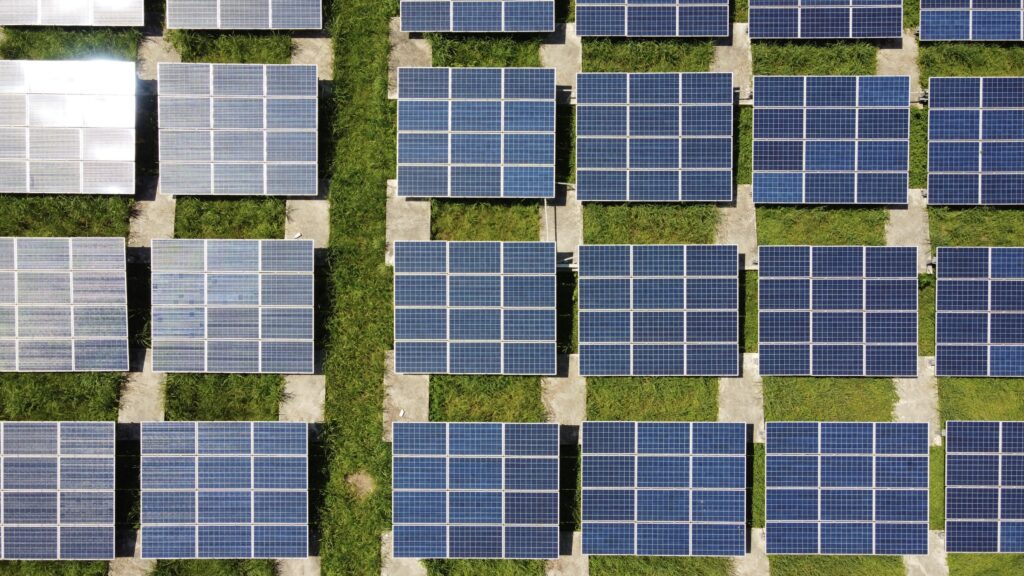In this article, you will discover the vital role that renewable energy sources play in reducing greenhouse emissions. By harnessing the power of renewable resources such as the sun, wind, and water, we can significantly decrease our reliance on fossil fuels. Not only do these sustainable energy alternatives produce minimal to no greenhouse gas emissions, but they also offer cleaner, more environmentally friendly solutions for our energy needs. Together, let’s explore the various ways in which renewable energy helps combat the pressing issue of greenhouse emissions.
Understanding Greenhouse Emissions
Definition of greenhouse emissions
Greenhouse emissions refer to the release of gases into the Earth’s atmosphere that have the ability to trap heat. These gases, including carbon dioxide (CO2), methane (CH4), nitrous oxide (N2O), and fluorinated gases, create a greenhouse effect, which leads to global warming and climate change.
Sources and causes of greenhouse emissions
Greenhouse emissions are primarily produced through human activities such as burning fossil fuels for electricity, transportation, and industrial processes. Other sources include deforestation, agriculture, and waste management. These activities release large amounts of carbon dioxide and methane, contributing to the growing concentration of greenhouse gases in the atmosphere.
Impact of greenhouse emissions on the environment
The increasing levels of greenhouse emissions have detrimental effects on the environment. They disrupt the Earth’s natural balance, leading to rising global temperatures, melting ice caps and glaciers, sea-level rise, extreme weather events, and changes in ecosystems. The impact on human health, agriculture, and biodiversity is profound and calls for immediate action to reduce greenhouse emissions.
Introduction to Renewable Energy Sources
Definition of renewable energy sources
Renewable energy sources are natural resources that replenish themselves over time and have a minimal impact on the environment. Unlike fossil fuels, which are finite and contribute to greenhouse emissions, renewable energy sources are sustainable and provide long-term energy solutions.
Types of renewable energy sources
There are several types of renewable energy sources, including solar power, wind power, hydropower, bioenergy, geothermal energy, and tidal energy. Each of these sources harnesses the power of nature to generate electricity or heat, offering abundant and clean alternatives to traditional energy sources.
Advantages of renewable energy sources over traditional sources
Renewable energy sources offer numerous advantages over traditional sources. They produce little to no greenhouse gas emissions during operation, significantly reducing the carbon footprint. Additionally, they help diversify the energy sector and decrease reliance on finite fossil fuel reserves. Renewable energy sources also create economic opportunities, promote energy independence, and contribute to the overall sustainability of the planet.

Check Out Our Top Eco Friendly Product Picks On Amazon Here
Renewable Energy Sources and Greenhouse Emissions
Reduction of greenhouse emissions through renewable energy
One of the key benefits of renewable energy sources is their ability to reduce greenhouse emissions. By shifting from fossil fuels to renewable sources, we can decrease the amount of carbon dioxide and methane released into the atmosphere. Renewable energy sources provide a sustainable and cleaner alternative that mitigates the environmental impact of energy production.
Comparison of greenhouse emissions between renewable and non-renewable sources
Renewable energy sources have significantly lower greenhouse gas emissions compared to non-renewable sources. Fossil fuels like coal, oil, and natural gas release substantial amounts of carbon dioxide when burned for energy. In contrast, renewable energy sources have minimal carbon emissions or none at all, especially when considering their full life cycle, from extraction to end use.
Contributions of renewable energy sources to mitigating climate change
Renewable energy sources play a vital role in mitigating climate change. By displacing fossil fuel use, they reduce overall greenhouse gas emissions, helping to limit global temperature rise. The transition to renewable energy is crucial for achieving international climate goals and ensuring a sustainable future for generations to come.
Solar Power
Harnessing energy from the sun
Solar power harnesses the radiant energy from the sun and converts it into electricity or heat. Photovoltaic (PV) panels, made of semiconductor materials, absorb sunlight and generate an electrical current through the photovoltaic effect. Solar thermal systems use reflective surfaces and mirrors to concentrate sunlight for producing heat.
Process of converting sunlight into electricity
In photovoltaic systems, sunlight photons excite electrons in the semiconductor material, creating a flow of electric current. This direct current (DC) is then converted into alternating current (AC) through inverters, making it suitable for household or industrial use. Solar thermal systems, on the other hand, use sunlight to heat a fluid that can produce steam, which drives a turbine generator to produce electricity.
Benefits of solar power in reducing greenhouse emissions
Solar power offers significant benefits in reducing greenhouse emissions. It produces electricity without any greenhouse gas emissions at the point of generation, thereby reducing reliance on fossil fuel-generated electricity. Solar power also contributes to the decentralization of the energy grid, allowing individual households or communities to generate their own clean energy. Furthermore, the abundance of sunlight makes solar power a reliable and sustainable energy source.

Wind Power
Utilizing wind energy to generate electricity
Wind power involves converting the kinetic energy of wind into electricity. Wind turbines, often grouped together in wind farms, use the force of the wind to rotate their blades, which are connected to a generator. This rotation generates electricity that can be distributed for various purposes.
Process of converting wind power into usable energy
When wind blows, it causes the blades of a wind turbine to rotate. As the blades turn, the kinetic energy of the wind is transformed into mechanical energy. This mechanical energy is then converted into electrical energy through a generator. The electricity produced is then transmitted through power lines to homes, businesses, and industries.
Positive environmental impact of wind power
Wind power has a positive impact on greenhouse gas emissions. It is a clean and renewable energy source, producing no direct emissions during operation. By utilizing wind power, we can significantly reduce the need for fossil fuel-based electricity generation, thereby reducing greenhouse gas emissions and mitigating the effects of climate change. Wind energy also helps to diversify the energy mix and promote sustainability.
Hydropower
Tapping into the energy of flowing water
Hydropower harnesses the energy of flowing or falling water to generate electricity. It is one of the oldest and most widely used renewable energy sources. Hydropower plants utilize the force of water to turn turbines, which are connected to generators that produce electricity.
Methods of harnessing hydropower
There are two main methods of harnessing hydropower. The first method is through damming rivers and creating reservoirs, where water is stored and released to generate electricity. The second method is known as run-of-river hydropower, which involves directing river water through turbine systems without the need for large-scale dam infrastructure.
Role of hydropower in reducing greenhouse emissions
Hydropower plays a significant role in reducing greenhouse emissions. It is a clean and renewable energy source that produces no direct greenhouse gas emissions during operation. By replacing fossil fuel-based electricity generation, hydropower helps to reduce carbon dioxide emissions and contribute to a more sustainable energy mix. Additionally, hydropower provides a reliable and predictable source of energy, making it an essential part of the transition to a low-carbon future.

Bioenergy
Definition and types of bioenergy
Bioenergy refers to the energy derived from organic matter, such as plants, crops, agricultural waste, or forest residues. It can be used for heat, electricity generation, or as a transportation fuel. There are two main types of bioenergy: biofuels and biomass.
Conversion of organic matter into energy
The conversion of organic matter into energy involves various processes. For biofuels, crops such as corn, sugarcane, or soybeans are processed to extract oils or fermentable sugars, which can be converted into biodiesel or ethanol, respectively. Biomass, on the other hand, can be burned directly to produce heat and electricity or converted into biogas through anaerobic digestion.
Benefits of bioenergy in lowering greenhouse gas emissions
Bioenergy has the potential to contribute to lower greenhouse gas emissions. When compared to fossil fuels, biofuels have the advantage of being made from renewable sources, reducing carbon dioxide emissions when combusted. In addition, the use of biomass for heat and electricity generation can replace the burning of fossil fuels, further mitigating greenhouse gas emissions. However, it is crucial to ensure sustainable and responsible sourcing of feedstock for bioenergy production to avoid negative environmental impacts.
Geothermal Energy
Extracting thermal energy from the Earth’s internal heat
Geothermal energy harnesses the heat stored within the Earth’s interior for various applications, including electricity generation and heating. It is derived from the natural heat produced by the Earth’s core, which is a result of radioactive decay and residual heat from the planet’s formation.
Process of harnessing geothermal energy
To harness geothermal energy, wells are drilled into the Earth’s crust to access hot water or steam reservoirs underground. The heat is then extracted by pumping the hot water or steam to the surface, where it is used directly for heating or for generating electricity through steam turbines.
Contribution of geothermal energy to greenhouse gas reduction
Geothermal energy makes a significant contribution to greenhouse gas reduction. Unlike fossil fuel-based electricity generation, geothermal energy produces minimal greenhouse gas emissions during operation. By utilizing geothermal energy, we can reduce our dependence on fossil fuels and mitigate the carbon footprint associated with energy production. Geothermal power plants also have a small land footprint, making them a sustainable option for meeting energy demands.

Tidal Energy
Tapping into the power of ocean tides
Tidal energy harnesses the kinetic energy of ocean tides and converts it into electricity. It relies on the regular rise and fall of tides caused by the gravitational interactions between the Earth, moon, and sun.
Utilizing tidal energy for electricity generation
Tidal energy is harnessed through underwater turbines that are placed in areas with strong tidal currents. As the tides flow in and out, the kinetic energy of the moving water turns the turbine blades, generating electricity. This electricity is then transmitted to the onshore power grid for consumption.
Positive impacts of tidal energy on greenhouse gas emissions
Tidal energy has positive impacts on greenhouse gas emissions. Similar to other renewable energy sources, tidal energy produces minimal or no greenhouse gas emissions during operation. By harnessing the power of ocean tides, we can reduce our reliance on fossil fuel-based electricity generation and mitigate climate change. Tidal energy is predictable and reliable, making it a promising option for meeting clean energy demands.
Renewable Energy Sources: Conclusion
Summary of the role of renewable energy sources in reducing greenhouse emissions
Renewable energy sources play a crucial role in reducing greenhouse emissions and mitigating climate change. Solar power, wind power, hydropower, bioenergy, geothermal energy, and tidal energy provide clean and sustainable alternatives to traditional energy sources. By displacing fossil fuels and minimizing greenhouse gas emissions, renewable energy sources help to combat global warming and protect the environment.
Importance of transitioning to renewable energy for a sustainable future
Transitioning to renewable energy is of utmost importance for a sustainable future. By embracing renewable energy sources, we can significantly reduce greenhouse emissions and mitigate the impacts of climate change. Renewables offer cleaner and more sustainable alternatives to fossil fuel-based energy production, promoting energy independence, economic growth, and environmental protection. It is essential that individuals, communities, governments, and businesses collaborate to accelerate the transition to renewable energy and secure a sustainable future for generations to come.
Check Out Our Top Eco Friendly Product Picks On Amazon Here




